Lungs And Breathing
Categories: Music And Science Mini Units
This unit of work for primary school classes explores the respiration system through scientific investigation and musical activities.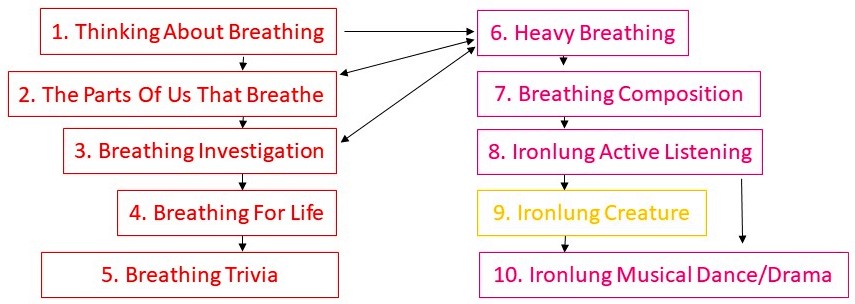
1. Thinking About Breathing
Focus: Science – Breathing
Curriculum Links: Science – ask questions and decide how they might find answers to them; use first-hand experience and simple information sources to answer questions; explore, using the senses of sight, hearing, smell, touch and taste, and make and record observations; to recognise…the main external parts of the bodies of humans…
Achievement objectives: Students will observe and record what happens when humans breathe.
Resources: pens/pencils/crayons, paper.
Safeguarding note: You won’t be able to do this activity if your school has a no-touching policy, and even if this does not apply to should ascertain whether the members of the class are happy to participate.
- Put your hands on someone’s back while they breathe. What happens when they breathe in and out?

- Put your hands on your own tummy or chest. What happens when you breathe in and out?
- Listen carefully to the sounds you make when you breathe in and out.
- Which parts of us help us breathe in and out?
- Draw a picture of yourself, and label it to show what breathing looks and feels like
2. The Parts Of Us That Breathe
Focus: Science – Breathing Apparatus
Achievement objectives: Students will research information on the breathing apparatus of humans.
Resources: Follow on from 1. Thinking About Breathing. Research materials about the human body
- How do you think breathing works? Make some predictions about these questions based on what you observed in Activity 1:
- Mix and Match
- Use information about the human bodies to find out about these parts of us. Match the scientific names with the definitions.
- Create a visual impression of our breathing parts and label it, or create a dramatic interpretation of breathing and present it to others.
- Here are the answers to the Mix and Match.
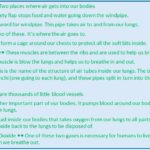
3. Investigation – Lung Capacity
Focus: Science – Investigating skills, Planning, Obtaining, Presenting, Evaluating Evidence
Achievement objectives: Students will collect data about breathing, present it in tables and/or line graphs, and evaluate their results.
Resources: method of measuring people; balloons (if the balloons are thick and difficult to blow up, you might need to blow them up with a pump first to loosen them), chart to record data; tape measure to measure balloons.
- Can a bigger person take bigger breaths than a smaller person? How can we investigate this?

- Discuss this and write down your ideas.
- If you can’t think of a way of investigating this question, here is an idea:
- Select a group of people to be your sample (You should have at least ten). They should be of different sizes.
- Organise your group according to size. How will you measure them? By height, by weight, by chest size?
- Each person in the group in turn takes a deep breath, then blows up a balloon as far as they can with one breath only.
- Once they have blown all the air from their lungs into the balloon, tie the balloon, being careful not to let any air escape.
- Measure the circumference of the fattest part of the balloon and make a note of its size in a table like this:
| Person and Chest Size | Balloon size |
| Jonathan – 120cm | 48cm |
| Jason – 107cm | 21cm |
| Julian – 100cm | 41cm |
| Jimmy – 93cm | 38cm |
| Jamie – 80cm | 35cm |
6. Transfer your results into a line graph like this: 
7. What does this graph tell you about the original question?
8. Why do you think Jason’s result is so low in these results? Give suggestions.
4. Breathing For Life
Focus: Science – Good Health.
Achievement objectives: Students will learn about the effects on the human body of some diseases and drugs, and about the importance of exercise for good health.
- Some big people will not be able to take such big breaths as some smaller people.
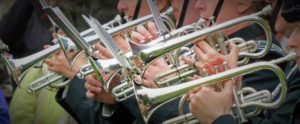
- Some people use their lungs and breathing muscles much more than others, so they become more efficient at taking in air. Who might these people be?
- Other people have problems with their lungs, which make them less efficient, so they can take less air in. Who might these people be?
- One disease that affects the lungs is tuberculosis. Tuberculosis affects the lungs by allowing liquid to gather in the lungs. This means that some bronchioles are drowning and cannot transfer the oxygen to the blood.
- Heavy or long-term smokers have a similar problem. The smoke gathers in the lungs and forms a sort of sticky tar that clogs up the bronchioles and stops them transferring oxygen to the blood.
- Discover if anyone in your class or school suffer from asthma. How does this affect their breathing? Invite a specialist to come in and talk to your class.
- Sportsmen and sportswomen, singers, and musicians who play wind instruments use their lungs more than most and are able to use their lungs more efficiently. This means they can take in more air every time they breathe in, and can process more of the air as well, so more oxygen gets into their blood.
 What happens to your breathing when you’ve done some exercise? Why do you think this is?
What happens to your breathing when you’ve done some exercise? Why do you think this is? - Igor Stravinsky, the famous Russian composer suffered from tuberculosis. One of his daughters and his first wife, Catherine, died of the disease. Stravinsky didn’t die of tuberculosis though. He lived to be about 80 years old. He had a very strict exercise regime – he exercised every morning, and liked to play tennis.
- Create a poster about things you can do that are good for breathing, and things that are bad for breathing. Put Stravinsky on your poster.
5. Breathing Trivia
Focus: Science – Revision and Extension.
Achievement objectives: Students will revise and research information about breathing.
Resources: research materials about the human body
- Hold a Breathing Quiz by organising yourselves into teams and asking each other questions about breathing.
- Research and compile some questions of your own. Here are a few to get you started:
What is a yawn? A yawn is a way of getting rid of lots of extra carbon dioxide in the lungs.
What is respiration? Respiration is when cells in the body use oxygen and sugars from the food we eat to produce energy.
What is the larynx? Your larynx is your voice box.
How does the larynx work? Air from your lungs passes over your vocal chords and makes them vibrate, producing a sound.
How much of the air around us is oxygen? One fifth.
What is the French Scientist Antoine Lavoisier (1743-1794) famous for? He named the gas oxygen in 1777.
6. Heavy Breathing
7. Breathing Composition
Focus: Music – Timbre and Composing. Curriculum Links: explore, choose, combine and organise sounds and musical ideas, within musical structures; How sounds/music can be made in different ways and described using given and invented signs and symbols; Achievement objectives: Students will explore timbres, and compose music. Resources: Instruments, means of notating music
- Make lots of breathing sounds or find voice sounds that sound breathy.
- Make lots of sounds which require breath to make the sound, like breathing through and onto things like wind chimes, shell chimes, leaf chimes, paper chimes, wind instruments like recorders and other pipes. Maybe someone in your class plays another wind instrument like a trumpet or clarinet.
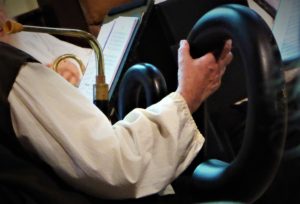
- Create a class Breathing Composition using some of your breathing sounds.
- Invite another class or some other visitors to come and hear you perform your Breathing Composition
- Make a record of your composition using shapes and letters and music notation, so that you can play it again if you would like to.
8. Ironlung Active Listening
Focus: Listening.
Curriculum Links: listen with attention to detail.
Achievement objectives: Students will imaginatively listen to and interpret music.
Resources: Recording of Ironlung by David Downes (Taringa Areare CD); CD player
- Listen to Ironlung. What does it make you think of?
- What do you think is making the music?
- Can you hear any specific sounds?
9. Ironlung Creature
Focus: Literacy – Writing.
Curriculum Links: To create imaginary worlds; to imagine and explore feelings and ideas.
Achievement objectives: Students will write imaginatively
- A lung made of iron – what would it sound like?
- What would breathe with an iron lung?
- Invent a creature or thing that breathes with an iron lung. Make up a story about it.
10. Ironlung Musical Dance/Drama
Focus: Creative Responses to Music.
Curriculum Links: Music – explore and express their ideas and feelings about music using movement, dance and expressive and musical language; practise, rehearse and present performances with an awareness of the audience.
Achievement objectives: Students will initiate and develop ideas to create drama and dance in response to musical stimuli.
Resources: Large space; recording of Ironlung by David Downes (Taringa Areare CD); CD player; props required for performance.
Assessment suggestions: Performance In The Arts Achievement Checklist, Dance, Visual Arts, Drama; Creativity In The Arts Achievement Checklist, Dance, Visual Arts, Drama
- Create an iron lung which breathes in and out at the frenetic pace of the music using dance and movement.
- Create a story around your own iron lung, and perform the story to an invited audience.
Case Study – Vision Of The Future
I used this music to create a musical dance/drama with a class of year 1 students which was presented to the school in book week. The school’s teacher/librarian had chosen the themes for each class – ours was “A Vision Of The Future”. Below are the processes we went through, plus the final script.
Preliminary activities:
- Thinking About Breathing. We got as far as discussing our mouths, noses, ribs, muscles and lungs. We guessed where our lungs were, based on our discoveries when placing our hands on the back while breathing, and by looking at others as they breathed. I showed them a picture of lungs and how they work from a science book about the body.
- Heavy Breathing and Breathing Composition. We made a breathing sound bank on a small whiteboard, then selected sounds from the bank for our composition, which we drew on a large blackboard with coloured chalks.
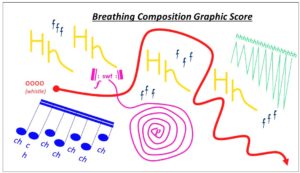 Here is a copy of our composition. The students already knew about semiquavers being fast and short notes so they chose that way of writing the ch sound. They also understood about loud and quiet and the musical symbols for them, so they suggested we use p and f for the swf sound. They thought I should write swf lots of time to show that it repeated until the end of the spiral, but I explained that there was a short cut and taught them the repeat sign.
Here is a copy of our composition. The students already knew about semiquavers being fast and short notes so they chose that way of writing the ch sound. They also understood about loud and quiet and the musical symbols for them, so they suggested we use p and f for the swf sound. They thought I should write swf lots of time to show that it repeated until the end of the spiral, but I explained that there was a short cut and taught them the repeat sign.
We performed the composition to ourselves several times in a few different ways:
The class was divided into groups – one for each sound. I drew a metre rule from left to right across the blackboard. As the right hand side of the ruler touched their sound they made the sound;
Still divided into groups, the class followed the directions of a conductor who pointed at different sounds with rulers – one in each hand so that two sounds could be played at once;
We wrote numbers on the sounds, then played the sounds in this order – everyone performing each sound;
(Another class (Year 5/6) came into the room for a lesson later that day – I asked them to interpret the Graphic Score using only the sounds they could make using their voices – the performance was almost exactly the same as the Year 1 class)
- I asked the class to listen to the music with two questions in mind: How were the sounds being produced? What pictures popped into their minds as they listened? I suggested they lie or sit very still and close their eyes so they could imagine the pictures more clearly
- We listened to the music. Their eyes popped open as soon as it started as they were astonished by it, but they almost all loved it from the start. Several children wanted to get up and dance, but I made them sit still and listen, so that the others could concentrate. I promised them dancing later on.
- We discussed our pictures and I wrote/drew them on the whiteboard. Then I told them it was called Ironlung. We discussed again what lungs were and what iron was and imagined all sorts of creatures which might have an iron lung.
- I let them dance to the music – free dance. Then we danced again, this time I gave out stickers for great dancing which fitted really well with the music – again they had to listen. We made it Musical Statues. If they spoke or made any other vocal sounds they were out of the game – this enabled everyone to listen carefully.
- We made ourselves into a little shape, and imagined we were lungs. As we breathed in and out we filled our little shape with air and then shrank back again. Each time more air came into our little shape so we got bigger each time, like a balloon being blown up.
- Again the students danced to the music which was turned on and off. When the music stopped, the students had to make themselves into an interesting plant with flowers and leaves.
- Half the class were interesting plants, the other half were children admiring the shapes with their hands and faces, but not their voices.
- Some members of the class formed a wind orchestra using wind chimes and breathing sounds amplified with a microphone and speaker. Everyone else moved with the wind music.
- I told them a brief outline of our part in the book week performances, and vaguely explained about our story. We discussed at great length how we might construct our iron lung. Here are a few of the suggestions we tried out and the reasons why we rejected them:
Pieces of iron – too heavy for year 1s;
Pieces of cardboard, spray painted with silver – yes, worked quite well, but not as visually exciting as our winning suggestion;
A large piece of silvery material under which children thrust their arms in and out – this was good for getting the throbbing going, but didn’t look much like a lung with pointy little finger shapes. Also silvery material is quite expensive – we tried it out with an ordinary sheet.
Umbrellas throbbing in and out – this was the one! We ended up with a lung made of seven umbrellas – four sitting, three standing behind, throbbing in and out, and opening and closing, and twirling, each covered with aluminium foil – it was spectacular!
All of the above served the dual purposes of introducing the students to the various elements of the story and the movements involved, as well as auditioning the children without their knowledge for their part in the performance. The class teacher and I did an open audition for the job of reader.
Here is our final script:
Vision Of The Future using the music Ironlung by David Downes
Cast:
Reader; 7 lung children – with silver umbrellas; 7 children – dressed as regular children, with headpieces like pilots made of pipe-cleaners and pompoms; 7 flower children – with flowers and other greenery attached – home made or real; Musicians – with nature-like “wind” instruments and sounds – leaf chimes, key chimes, shell chimes, whistling, breathing sounds.
The iron lung is in the middle of performance area.
Children are asleep around the iron lung.
Flower children are dotted around the perimeter of the performance area.
Musicians are at one side with a microphone.
Reader: This iron lung stands for all the technology we rely upon more and more in our lives
Play music to 40 secs.
Lung throbs with umbrellas in and out etc.
Reader: In the future, will children rely completely on technology for everything they do?
Play music.
Iron lung throbs again.
Children wake up and plug themselves into the lung and rush about doing everyday things in a rushed and mechanical way.
When music gets to the “broken” part, the lung breaks into parts and each umbrella-wielding child spirals away to land on the ground beside one of the flower children.
Children are unplugged and return to sleep. (breathing heavily?)
Music off.
Reader: Or will we turn right away from technology and live with nature as our breath of life?
Breathing music is performed into microphone/speakers.
Flower children breathe in and out with the music and eventually “grow” into greenery.
Children admire the greenery, pretending to smell and caress etc.
Reader: Or maybe we will be clever enough to live with nature and technology in harmony together.
Tape music is gradually increased in volume to join breathing music.
Umbrellas gently throb.
Flowers gently breathe.
Children take up book and read.

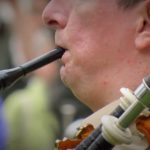
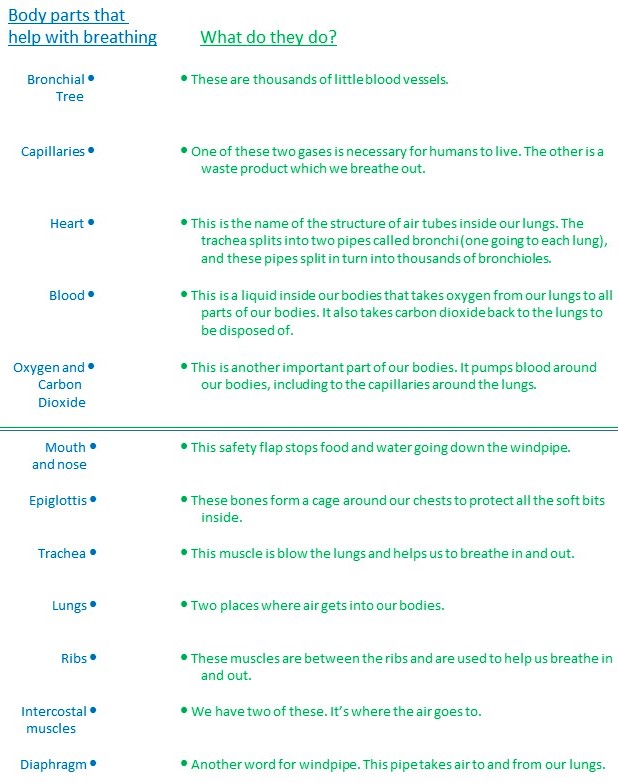

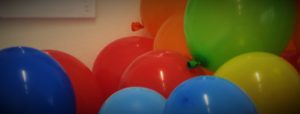
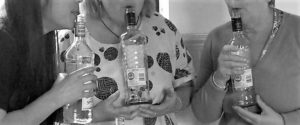
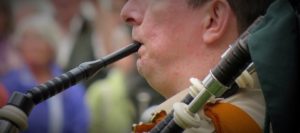
No comments yet.